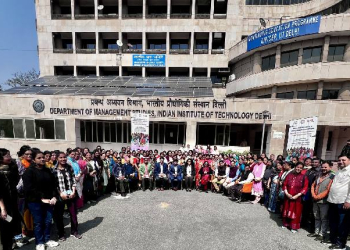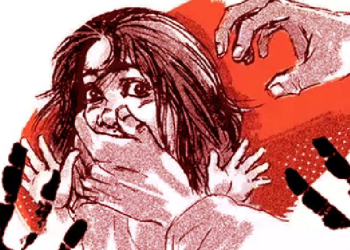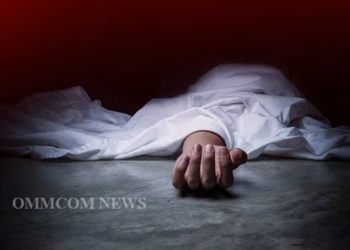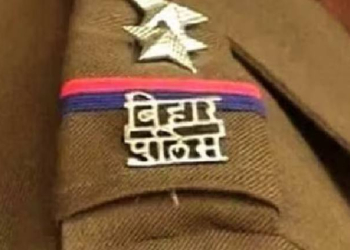New Delhi: The communal clashes during a Shobha Yatra procession in the national capital on April 16 have left a series of difficult conundrums for the public to understand, making people restive to get the right answers.
The police has till now arrested 23 people and apprehended 2 juveniles while one of the arrested person’s relatives was bound down for injuring a police Inspector by pelting stones at him.
Delhi Police officials are continuously maintaining that the case is progressing fast and a fair investigation, without any pressure or prejudices, is underway.
Yet, the basic question of what led to the clashes is still open. The facts are — there was a religious procession, it was passing through a mosque area and then there was stone pelting, firing, and clashes.
But what were the circumstances that led to the violence? Delhi Police Commissioner Rakesh Asthana touched upon the issue during the first media briefing on Monday, two days after the communal clashes.
“Your question is what was the reason for provocation. Who started that provocation? This is all part of the investigation. At this juncture I cannot answer this question as the investigation has not been completed,” the Commissioner said.
Even though the Delhi Police chief refrained from answering the question, yet, the FIR registered by the police, based on the first hand report of its own Inspector points out that the arrested accused Ansar was the prime person who incited the violence.
According to the FIR lodged at the Jahangirpuri police station, the Shobha Yatra procession was passing off peacefully, but at around 6 p.m., when it reached outside a mosque in C-block, the accused Ansar came with 4-5 associates and started arguing with the participants in the Shobha Yatra. The argument soon turned violent and both the sides started pelting stones at each other.
“I inspector Rajiv Ranjan Singh, tried to pacify the situation and separated the two groups, however, within some time, they again started pelting stones after which I informed the Police Control Room about the development,” read the FIR. Soon after this, more police force reached the spot along with senior officials, however, by that time the mob had turned violent. They pelted stones at the police force and also fired shots at them. One such shot hit a Sub Inspector while 7 more policemen were injured.
The warring camps accuse each other of provocation and inciting violence, but what exactly led to the provocation is still not clear.
It was not just one procession that passed through the same locality, rather, it was the third one that ultimately led to bloodshed.
Special CP (Law and Order) Dependra Pathak said the first two processions were taken out at 11 a.m. and 1 p.m. and their organisers took permission from the police on March 25 and March 31.
However, Delhi Police denied the request for the third Shobha Yatra procession as its organisers had made the request just one day before at night.
But even though there was no permission, the organisers went ahead and took out the procession. According to the officials, police personnel kept a close watch on them.
But if there was no permission, why was the police guarding the procession?
Responding to this very pertinent question, the Special CP said the police has a very focussed role of maintaining law and order. “If any situation erupts, if any kind of congregation is there, and if the situation is sensitive then we have to ensure that the situation doesn’t worsen and that is the reason that adequate personnel were there to cover it,” Pathak said.
He added that the Delhi Police had been successful in containing the situation in the minimum possible time with almost no injury to the citizens. Meanwhile, an FIR has been lodged against the organisers of this third Shobha Yatra for taking out the procession without permission.
Just 13 days before the communal clashes, another event — the Hindu Mahapanchayat Sabha — was organised in the same north west district where Dasna Devi temple priest Yati Narsinghanand Saraswati allegedly made inflammatory speeches against a particular community. Even this event was not allowed by the police but the organisers went ahead with it.
Coming back to the prime accused in this communal violence — Ansar Sheikh — whose pictures of a lavish lifestyle and a video of entering the Court with the “Pushpa Jhukega Nahi” gesture has stunned the people.
Who is Ansar? Why did he argue with the participants of the procession? Reportedly, Ansar owns a luxurious mansion in Haldia, a prime industrial township in West Bengal’s East Midnapore district and has an image of a philanthropist there.
A highly placed source in the Criminal Investigation Department (CID) of West Bengal Police told IANS on condition of anonymity that following a communication from the Crime Branch of Delhi Police, the state CID enquired about Ansar’s activities in Haldia. A team of the Delhi Police is likely to go to West Bengal for further investigations.
Whether the clashes in Delhi were a conspiracy or a sudden frenzy, people will have to wait for the investigation to be completed.
(IANS)



















